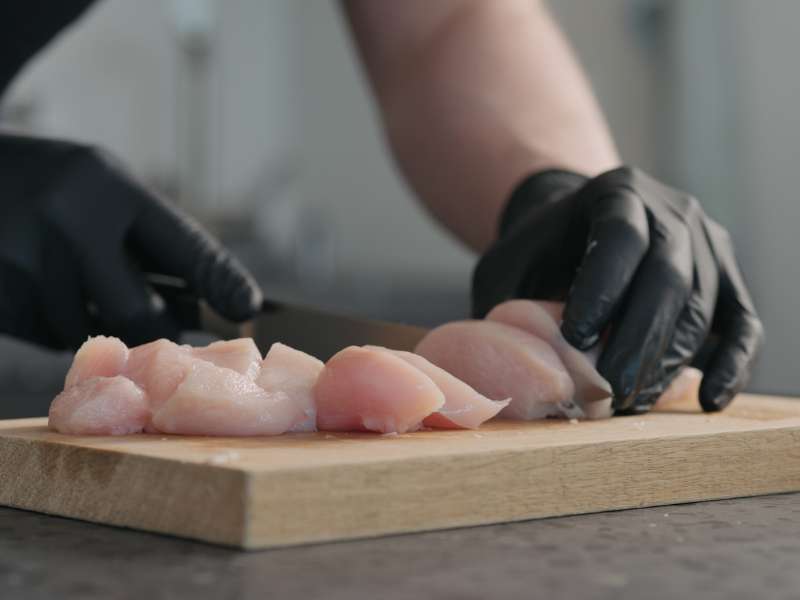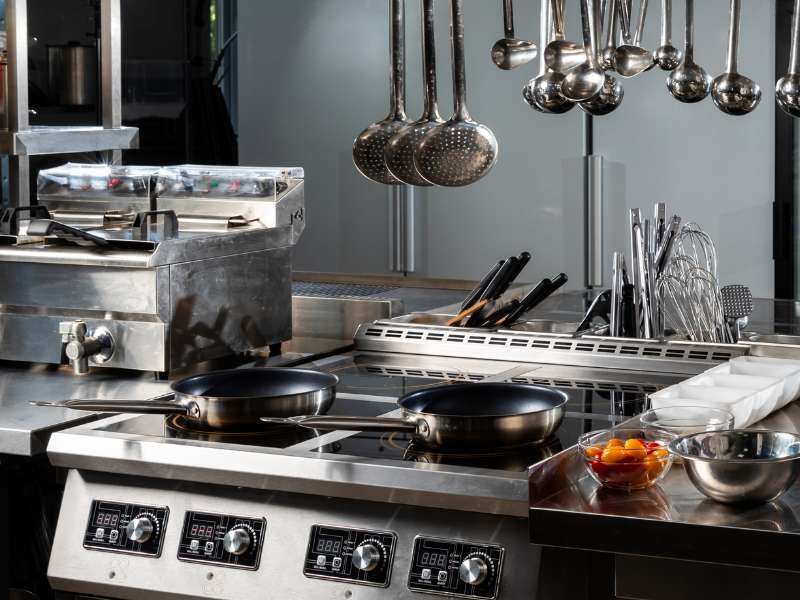The labor landscape in foodservice is undergoing seismic changes — there seems to be a smaller pool of potential candidates, workers with minimal restaurant experience, and higher wages on the table, fueling competition.
By being nimble and adaptable, particularly with menuing and inventory management, there are no labor challenges you can’t solve.
Recently, we decided to get a little inside perspective from a former restaurant operator. We sat down with Chef Lonnie Varisco, director of culinary business development at Performance — and a local New Orleans cooking legend — to talk labor solutions.
Q: Thanks for chatting with us, Chef Lonnie! So, with labor it’s kind of a new normal, right? What could be one way to help streamline operations and make things a little easier on your staff?
A: It’s cool to be with you, Harry. Yeah, restaurants should really consider downsizing their menus — utilizing their point-of-sale systems, identifying items that are not contributing to their bottom line, and taking that stress off the back-of-house. A smaller menu is going to require less inventory, which reduces the amount of “dead money” sitting on your shelves. After all, you’re not going to be doing the same amount of production with four people as opposed to eight —you get the idea.
The other thing that a smaller menu does is it gives a little more empowerment to your front-of-house staff, which is your sales team. Diners want to have that good, positive experience, so if your team has more knowledge about the menu, about making suggestions, they can help increase that average check — while creating a superb dining experience.
A smaller menu heightens training capabilities as well, and you’re able to get your staff a little more engaged, so guests feel good about spending their discretionary income at your location. Plus, consumers are interested in a smaller menu! It’s easier for them to make decisions — to understand what your concept does really well.
Q: Chef, some restaurants may be considering more readymade items. Is there a process to help them make that leap in certain circumstances?
A: Well, change often involves some emotion. You might feel that quality and consistency could be compromised. I always suggest analyzing the current process and making a comparison.
For example, think about dicing onions daily. Using a formula to calculate Edible Portion Yield is a great starting point. First, you would fabricate the onion and identify the waste, which is Yield Loss. Then, you can calculate the Edible Portion Yield, which is basically the food left after prep.
Let’s say the onion has a 25% yield loss. That means there’s 75% edible product left after prep, which is your Edible Portion Yield. So, a 25-lb. sack of onions, after applying the Yield Loss of 25%, would provide an Edible Portion Yield of 18.75 lbs.
If I pay $3 a pound, I would then take the as-purchased amount and divide it by the Edible Portion Yield. So, 3/.75 (Edible Portion Amount) = $4.00, the actual cost per pound or Edible Portion Cost. This shows you that the true cost of the onion is greater than the invoice reflects.
And then when you apply the hourly team member’s rate — let’s say $15 an hour to dice the 25-lbs. of onions — now, it’s easier to see that a bag of pre-diced onions provides immediate benefits with very little labor used, let alone the stress it can take off the kitchen team. Your labor cost is being utilized in a more impactful way.
Q: What are some solutions to cut down on that yield loss?
A: I call it purchasing “low-touch” items, but we’re talking about products that increase efficiency — a “boil-in-a-bag” sauce or a premade hamburger patty. It could be Bay Winds® Chilean Sea Bass that’s already portion cut for you or a 5 lb. bag of Peak Fresh Produce® Diced Onions. You open the bag — all of that is 100% yield, which is a huge benefit.
It’s going to take stress off your team, but it also provides you with a foundation for consistent food. The sealed, fresh Braveheart® 8 oz. Burger Patty, for example, is going to hold because it’s in the vacuum seal — it’s going to have a much longer shelf life. Or the new West Creek® 4 oz. Fully Cooked Patty — you just have to heat it and out comes a perfect burger, every time. It could be the new Zebec® Fire Grilled Chicken Skewers — put them in the oven, and they’re ready to rock and roll. It alleviates the need for high skill, as well, because you’re training process instead.
Q: Can you talk a little about the benefits of inventory cross-utilization?
A: Well, you’re giving an item more than one opportunity to pay for itself, right? And you have a shot at getting it out of your storage area faster, which is a good thing. The quicker I can get rid of it, the better for me, because I invested in it, you know? I got the return very quickly, and now I’m ready to move on to the next thing.
It’s also important to be creative, as a chef — looking ahead at development — what are the different ways I can use this item? Can I use it on a sandwich? Is it going to be an entrée component — you know, a salad component?
Another thing that works hand-in-hand with ingredient cross-utilization is cross-training — moving people around to different stations to give you a little bit better coverage. It usually creates a more positive work environment because employees are learning different skills, techniques, and methods. I mean, the idea is always to empower your team, right?
Q: Absolutely. Now, there’s a real connection between how food is sourced, consumer demand, and employee retention. Can you tell us about how quality and staff loyalty go together?
A: Oh yeah, so the dining public has become so hyper-educated on where food comes from, right? How it’s handled? What’s eco-friendly? I think it’s great to have a group of diners that has that knowledge, because they’re more appreciative of a team that can execute amazing food. And so, sourcing should meet those needs.
You can say, this is Bay Winds Faroe Islands Salmon that’s sustainably sourced, and it’s a great marketing tool to connect that guest to your location. You know, you can mention, we’re using First Mark® Recyclable Containers.
And then the staff usually has more pride in what they’re serving, so it has a domino effect. You’ll have more diners in your front-of-house, your team’s making better money, more tips, the back-of-house is rocking and rolling getting the food out. And so, you can have good retention of labor that way.
Q: Sounds like a cool way to build a strong culture! Thanks Chef, we appreciate your perspective.
A: You bet! Anytime.



